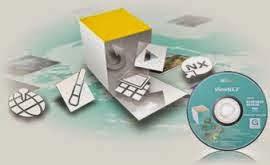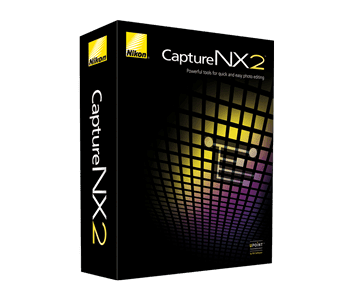Go North Old Man
 I took another camping and photo taking trip last weekend, staying at Cave Spring Campground in Oak Creek Canyon. The campground is on highway 89A, which runs between Sedona and Flagstaff in Arizona. It's a very beautiful area, heavily visited and photographed, including coverage by Arizona Highways Magazine.
I got up there on Thursday morning, 4/10/2014. I'd taken some time off in order to go up during the week so that I could claim a camp site. All of the sites that can be reserved are reserved, at least until into July. By then it's getting warm, even up there (roughly 5,400 feet elevation), and you might start finding some openings. Otherwise, you take your chances on the "first come, first serve" sites.
I had a mixed time up there - the place was great, it was great to get away, etc., but I have a hard time dealing with the elevation I'm sad to say. Too much time spent behind computer screens and not enough out walking. It took maybe an hour and a half to set up the camp site and I was worn out. That hampered me the whole time - do a little bit, get worn out.
That reaction to physical exertion does have a bit of an upside, however.
I took another camping and photo taking trip last weekend, staying at Cave Spring Campground in Oak Creek Canyon. The campground is on highway 89A, which runs between Sedona and Flagstaff in Arizona. It's a very beautiful area, heavily visited and photographed, including coverage by Arizona Highways Magazine.
I got up there on Thursday morning, 4/10/2014. I'd taken some time off in order to go up during the week so that I could claim a camp site. All of the sites that can be reserved are reserved, at least until into July. By then it's getting warm, even up there (roughly 5,400 feet elevation), and you might start finding some openings. Otherwise, you take your chances on the "first come, first serve" sites.
I had a mixed time up there - the place was great, it was great to get away, etc., but I have a hard time dealing with the elevation I'm sad to say. Too much time spent behind computer screens and not enough out walking. It took maybe an hour and a half to set up the camp site and I was worn out. That hampered me the whole time - do a little bit, get worn out.
That reaction to physical exertion does have a bit of an upside, however.
Stop and smell the flowers
 I'm forced to slow down. Realizing that, I spend more time just looking around and taking in the scenery. That was a good thing! It didn't lead to better pictures, necessarily, but I did enjoy more of the details in what I was seeing, hearing, and breathing.
I really enjoy getting away from work and the associated technology I use as a software engineer. When I'm camping there is very little in the way of electronic technology other than my camera and it's associated goodies. And even then, while the camera IS electronic, it's a substitute for film, and as such it doesn't seem as much of a technological gadget as it does a picture taking device that has some electronics on it. Perhaps it's by virtue of having mechanical attachments such as interchangeable lenses, filters, and a tripod. I don't know, but that's the little bit of technology I have and it's so different than my other work an home technology that I don't mind it.
Sleeping in a tent with my dog in cool air, making a fire in the morning so I can brew coffee and roast a hot dog for breakfast, while inhaling fresh clean air, is a wonderful way to get reset as a human.
Then, it's off to take a picture...
I'm forced to slow down. Realizing that, I spend more time just looking around and taking in the scenery. That was a good thing! It didn't lead to better pictures, necessarily, but I did enjoy more of the details in what I was seeing, hearing, and breathing.
I really enjoy getting away from work and the associated technology I use as a software engineer. When I'm camping there is very little in the way of electronic technology other than my camera and it's associated goodies. And even then, while the camera IS electronic, it's a substitute for film, and as such it doesn't seem as much of a technological gadget as it does a picture taking device that has some electronics on it. Perhaps it's by virtue of having mechanical attachments such as interchangeable lenses, filters, and a tripod. I don't know, but that's the little bit of technology I have and it's so different than my other work an home technology that I don't mind it.
Sleeping in a tent with my dog in cool air, making a fire in the morning so I can brew coffee and roast a hot dog for breakfast, while inhaling fresh clean air, is a wonderful way to get reset as a human.
Then, it's off to take a picture...
Wrapping Up
I started getting into photography last August, 8 months ago. I've taken a number of camping trips since for the purpose of getting out and taking pictures. Every trip prior to this last trip has resulted in my desire for another or a different piece of photographic equipment. But not this last trip.
I had recently added a graduated neutral density filter to my equipment and tried it out during the trip. I liked the results. The picture turned out better than similar pictures had before under similar circumstances - shooting up a hill side where the top of the hill was in bright sunlight compared to the bottom. This time I don't have any complaints about the picture.
I used my tripod to it's full advantage - I had the center column adjusted to the horizontal position in order to take an extended shutter release image looking down into the creek with the camera hanging out over a bridge railing - the picture to the right is the result. I couldn't have taken this picture without my tripod. This is using my kit VR 18-55mm lens, 5 second exposure @ f/25, ISO 100.
I used my regular ND filters and polarizers. I used my sling to try to walk around and get some bird pics. I used my LowePro fanny pack all the time. I used my GPS and cube bubble level.
I didn't wish for anything, except a mild interest to try the "hard" graduated ND filter, but that's it. I would LIKE a few more things, like a prime lens and the new Tamron 150-600mm zoom, but there's nothing more I NEED. Well, except more time camping!
 I just got finished taking and editing some pictures of a couple of bouquets that my wife got for her birthday last week.
I just got finished taking and editing some pictures of a couple of bouquets that my wife got for her birthday last week.








